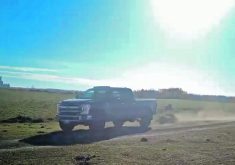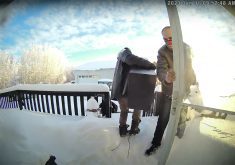Investigators are looking for answers into how unbranded remains of two cattle valued at about $5,000 were dumped behind a rural cemetery in Alberta.
The animal hides, heads, legs and rumens were discovered April 4 near the hamlet of Swalwell in Kneehill County south of Three Hills, said Michael Tucker, livestock inspector and area manager for Livestock Identification Services Ltd.
Although it appeared from the remains that the cattle had once been tagged, the devices were no longer there, he said.
“My personal feeling is that (those allegedly responsible) removed what they needed so they couldn’t be traced… the slaughter didn’t happen at that location.”
Read Also

Short rapeseed crop may put China in a bind
Industry thinks China’s rapeseed crop is way smaller than the official government estimate. The country’s canola imports will also be down, so there will be a lot of unmet demand.
Supply chain problems, labour shortages and other COVID-19 pandemic disruptions caused prices for some cuts of beef to soar late last year to their highest levels since at least 1995, with rib roasts costing more than $100 in some stores.
However, investigators don’t know where the two animals came from or why their remains ended up near Swalwell, said Cpl. Gina Slaney, media relations officer with the Alberta RCMP Southern Alberta District. They are believed to have been dumped sometime between March 31 and April 4.
About 50 percent of producers do not brand their herds, making it difficult to identify stolen cattle, said Tucker. The trend has been boosted by the pandemic, which has prevented producers from getting help from their peers during branding, Tucker said.
“And personally, I think everybody should be branded … at least if something like that happened, we’d have someplace to kind of start, where right now we’ve got no place to start to really start looking for who did it.”
The location where the cattle were dumped is in an isolated area more than one kilometre from the nearest structure, close to a road screened by trees in the cemetery.
“You could park in there and not be seen enough,” he said.
It is difficult to tell without the organs, but the appearance of the heads and hides suggest the animals were heifers and Red Angus or Red Angus cross.
“Whoever did this, the inside of the hides were very clean, with hardly any meat stuck to the hides — no holes in the hides from people cutting with knives — so whoever did it has had some experience.”
Although Tucker had heard of a couple of similar cases over his 16-year career, he said he had never before been called to one.
“I think it’s a very slim chance of finding out who did it, but saying that, sometimes people talk. It might come up.”
Anyone with information should contact the Airdrie RCMP at 403-945-7200 or via an anonymous tip to Crime Stoppers at 800-222-8477 (TIPS), online at www.P3Tips.com, or by using the P3 Tips app available through the Google Play or Apple App stores.
















